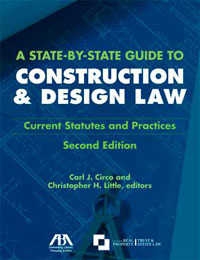by Christi-Anne H. Kudo Chock
Honolulu rail, officially referred to as the “High-Capacity Transit Corridor Project,” will generate its share of legal issues over an anticipated eight year construction period, including eminent domain, construction and procurement, and environmental law. The attorneys at Damon Key have a depth of experience in these fields, and stand ready to assist you if you will be impacted by the rail.
Eminent Domain
The City has the power to take property by eminent domain, provided the taking is “for public use” and “just compensation” is paid to the owner. According to the June 2010 Final Environmental Impact Statement, the City will acquire 199 parcels (40 full, and 159 partial acquisitions), which will include relocation of 20 residences, 1 church and 66 businesses, and the City has identified these properties by TMK number in the FEIS, a copy of which is available at www.hawaiitransit.org.
The City asserts that only those properties identified in the FEIS will be acquired, and that property owners will be offered fair market value and relocation expenses, but whatever the City might promise, affected property owners should be proactive in determining the value of their land and businesses. The City estimates acquisitions will be completed by 2014 for no more than $248 million total, based on property tax assessment records (not fair market value). According to the Honolulu Board of Realtors, the median sale price of single family homes in March 2011 was $548,500. That amounts to about $11 million for residential acquisitions, or only 4% of the estimated budget for all acquisitions.
Every property and business owner who might be affected by the rail project should keep these points in mind:
- The City is required to follow state eminent domain law, which establishes a strict procedure for the condemnation of private property when it is taken for public use.
- Federal law requires the City to provide relocation benefits.
- The City’s estimate of property’s value will not include attorneys’ fees and costs that property owners may incur to challenge the City’s valuation.
- The City may take legal possession of property ex parte (without the owner being present in court), provided the City deposits its estimate of “just compensation” with the court.
- If a property owner withdraws the deposit, it may constitute an abandonment of all of the owner’s defenses to the taking, except the amount of compensation.
- Usually, the property owner cannot recover its attorneys’ fees in a condemnation case, even if he or she establishes a higher value than the City offered to pay.
Environmental Law
The City must also comply with state environmental laws, including consideration of cultural and historical preservation. For example, the City has promised that detailed studies and decisions about burials and the displacement of hazardous materials will precede each of the four phases of construction. Property owners who might be affected by the project should closely follow the applicable comment periods for archaeological surveys, as well as rail-related developments and permits that require environmental review.
Recently, former Governor Ben Cayetano announced that he will spearhead a challenge to the rail project’s environmental review under federal law, even as the City defeated a state court lawsuit that challenged the FEIS under state burial laws. Under Hawaii law, burial sites are protected by a special review process culminating in an independent determination of whether remains should be preserved where they were discovered, or relocated. The plaintiff had challenged the City’s decision to look for burial sites on an ongoing basis, instead of conducting a comprehensive archaeological survey of all the areas in or around the proposed right-of-way before commencing any construction.
Specifically, she argued that the last phase of the transit corridor in Kakaako transects an area known to contain burial sites, and that postponing the survey until after the rail is almost finished will lead to pressure to relocate remains, instead of allowing for adjustments to the alignment. The City entered an agreement with the State Historical Preservation Division, however, that recognizes this and requires completion of the Kakaako archaeological survey to be completed before the design work for that phase is even begun. Consequently, the court concluded that phased review—with approval and continued oversight by SHPD—complied with Hawaii law. State burial law contains a very powerful tool—a “stop work” provision applicable to the “inadvertent” discovery of bones during construction – and SHPD has agreed to treat any and all discoveries as “previously identified,” which suggests that rail construction will be very difficult to stop once it has commenced.
Construction and Procurement
In addition to environmental challenges, the City is also facing lawsuits by contractors over the award of construction contracts pursuant to the State’s Procurement Code. By law, the government must follow a set procedure to award those contracts to ensure fairness and manage costs, among other things. (See “Bidding on Rail” by Matthew T. Evans).
Complex Land Transactions in Surrounding Areas
The legal landscape relating to land use in the areas surrounding the proposed path of the Rail Project will likely include complex land transactions, development agreements and other easements and leases never before utilized in Hawaii.
Attorneys specializing in rail-related issues include Kenneth R. Kupchak, Gregory W. Kugle, Anna H. Oshiro (construction and procurement), Robert H. Thomas, Mark M. Murakami, Tred R. Eyerly (insurance), Christi-Anne H. Kudo Chock and Matthew T. Evans.




